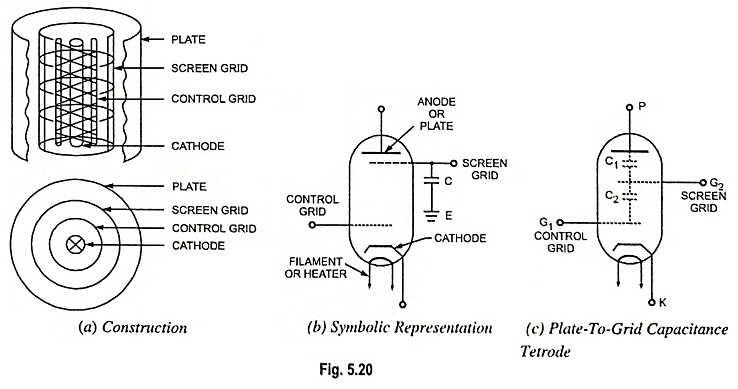Construction of Vacuum Tetrode, Working and Applications:
Tetrode means four, hence tetrode is a four electrode tube consisting of a cathode, a control grid, a screen grid, and a plate. The constructional features of a typical Vacuum Tetrode are shown schematically in Fig. 5.20 along with the symbolic diagram. The only constructional difference between a tetrode and a triode is the presence of an additional grid known as screen grid. The screen grid almost completely encloses the plate and thus acts as an effective electrostatic shield between the plate and the control grid.
Introduction of screen grid at a constant potential in between control grid and plate provides an effective shield between them. The grid-to-plate capacitance, Cgp, which usually runs from 2 to 12 pF in a triode is thereby reduced to values as low as 0.01 pF in a tetrode. This can be easily understood by referring to Fig. 5.20(c). With the addition of screen grid between plate and control grid, the control grid-to-plate capacitance, Cgp being formed of two capacitances (capacitance between plate and screen grid, C1 and between screen grid and control grid, C2) connected in series is reduced. This reduction in interelectrode capacitance Cgp nearly eliminates all the possibilities of capacitive feedback from plate circuit to grid circuit.
However, vacuum tetrode are seldom used because of its undesirable characteristics such as limited range over which the plate voltage can be varied, occurrence of instability and oscillations during the secondary emission region, and limited power output.
